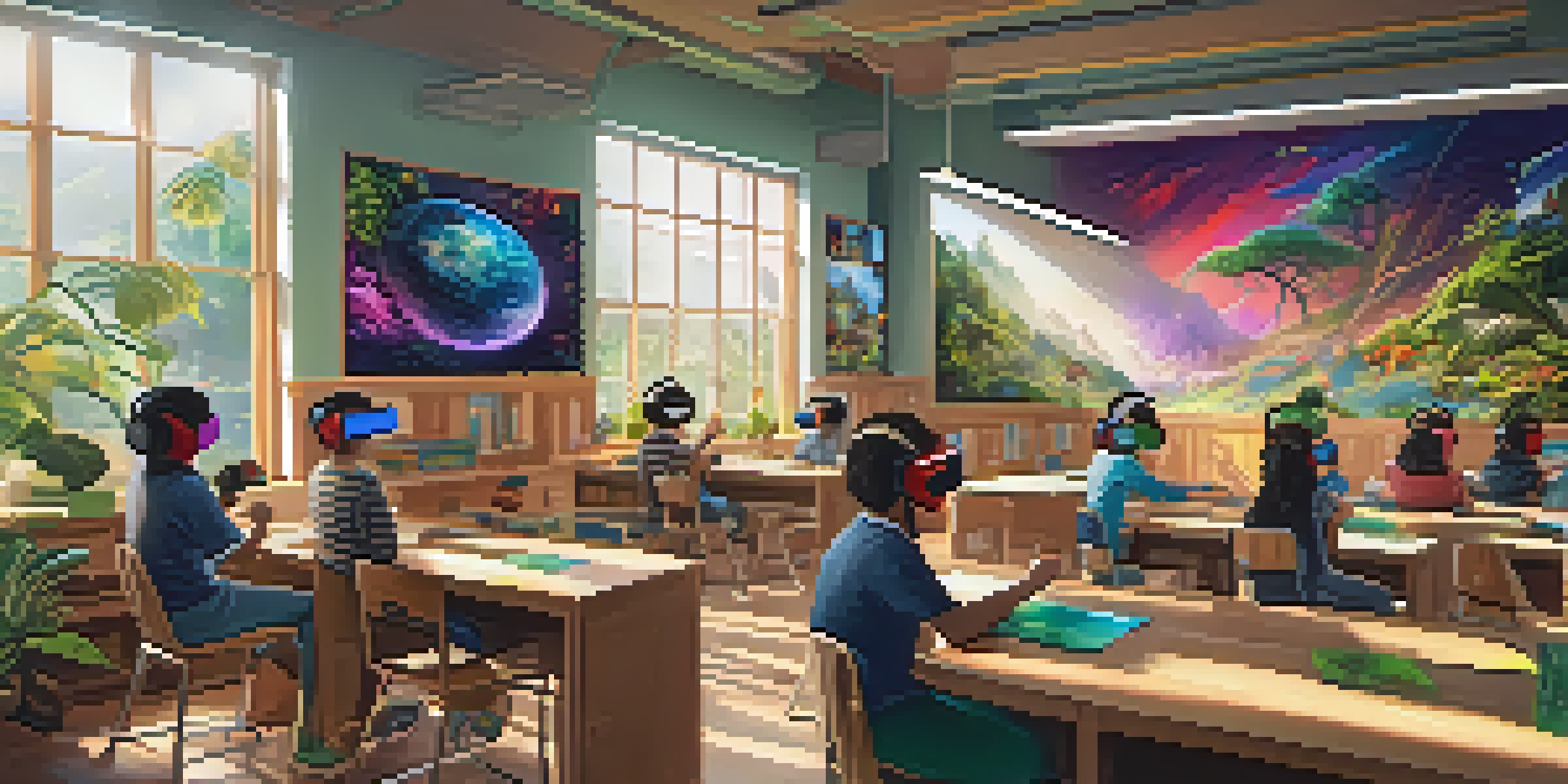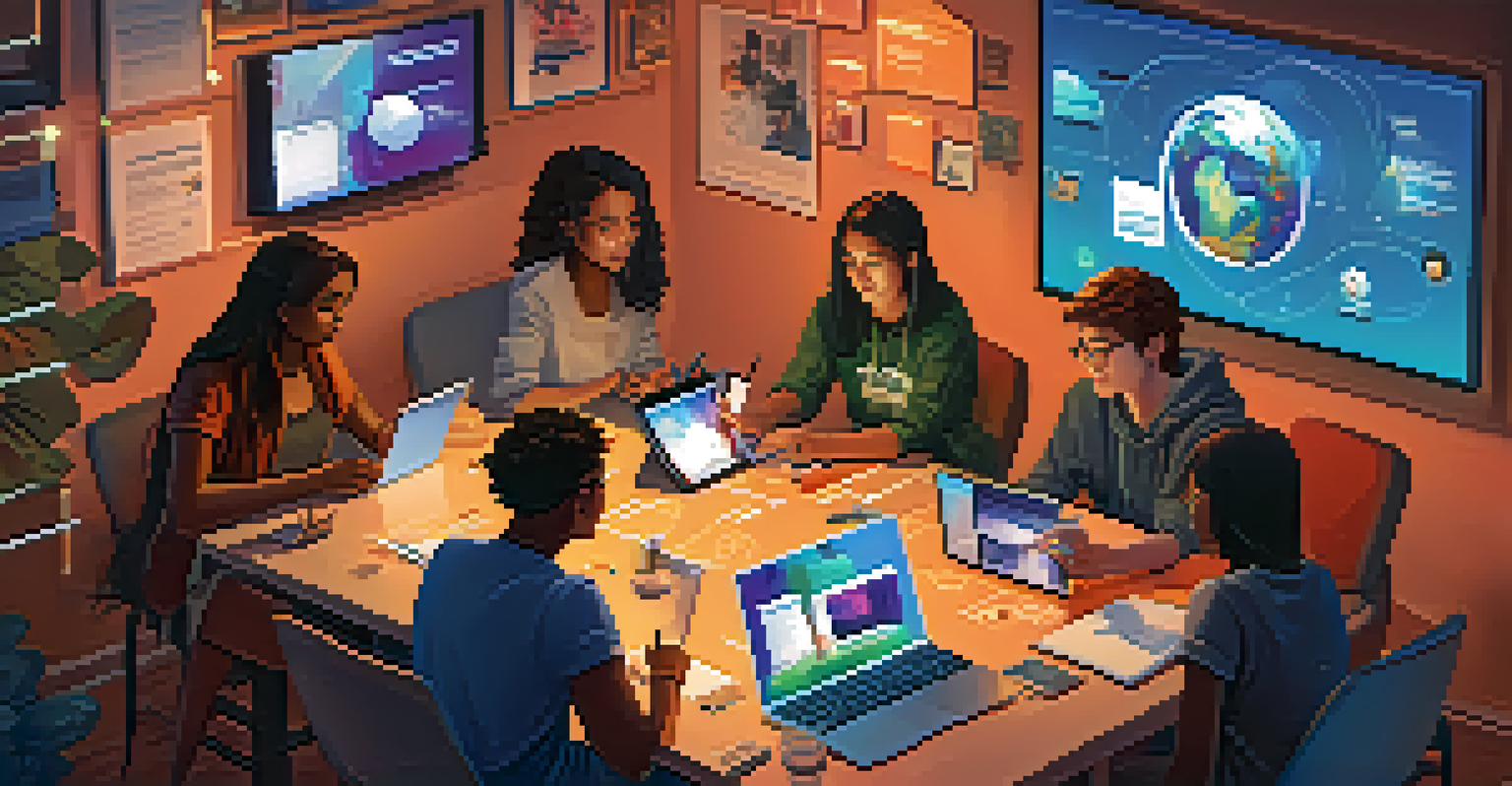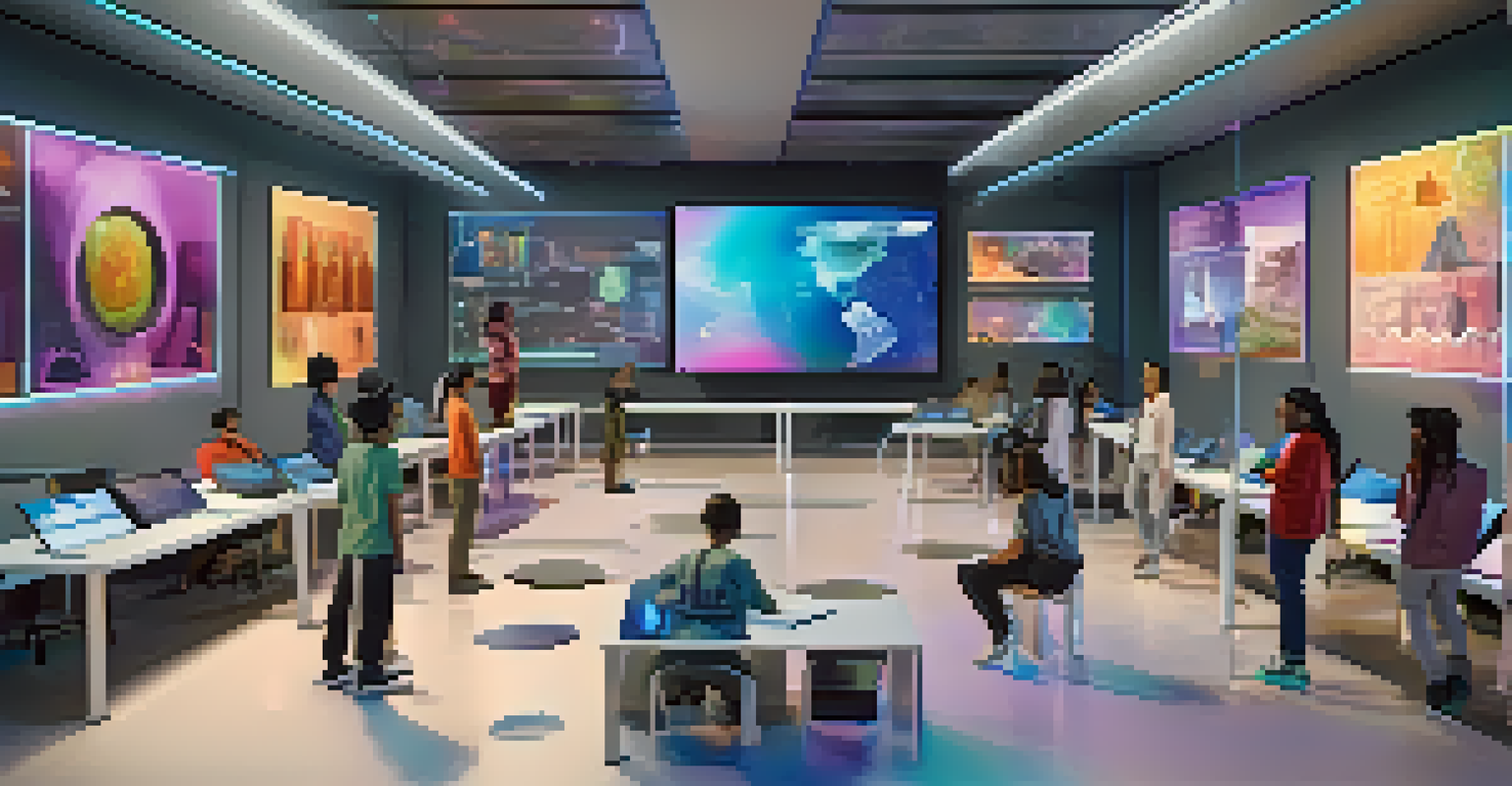Exploring Virtual Reality and Social Media in Education

The Rise of Virtual Reality in Education
Virtual reality (VR) is becoming a game-changer in classrooms. It allows students to immerse themselves in different environments, from ancient civilizations to outer space, fostering a deeper understanding of the subject matter. Imagine learning about the solar system while actually 'visiting' each planet through VR; it makes learning engaging and memorable.
Technology will not replace teachers, but teachers who use technology will replace those who don’t.
Schools and universities are increasingly adopting VR technology to enhance educational experiences. Research shows that immersive learning helps with retention and comprehension, as students can visualize concepts in a 3D space. This hands-on approach is especially beneficial for subjects like science and history, where practical experience can solidify complex ideas.
However, the integration of VR into education isn't without challenges. The cost of technology and training for educators can be significant barriers. Still, as technology advances and becomes more accessible, the potential for VR in learning environments continues to grow.
Social Media's Role in Education
Social media has transformed how students and teachers interact, creating a dynamic learning community. Platforms like Twitter and Facebook allow educators to share resources and ideas, while students can collaborate on projects and discussions beyond the classroom walls. This connectivity fosters a sense of belonging and encourages engagement.

Additionally, social media serves as a valuable tool for professional development. Teachers can follow educational thought leaders, participate in online forums, and discover new teaching strategies. By leveraging social media, educators can stay updated on trends and enhance their teaching effectiveness.
VR Enhances Learning Experiences
Virtual reality provides immersive environments that foster deep understanding and engagement in subjects like science and history.
Despite its advantages, social media also presents challenges, such as distractions and misinformation. Educators must guide students in using these platforms responsibly, ensuring that they benefit from the positive aspects while navigating potential pitfalls.
Combining VR and Social Media for Learning
The intersection of VR and social media offers exciting possibilities for education. Imagine students exploring a virtual museum while simultaneously sharing their experiences on social platforms, creating a collaborative learning environment. This blend encourages peer interaction and enriches the educational experience.
The great thing about social media was how it gave a voice to voiceless people.
Moreover, educators can create virtual classrooms where students from different backgrounds come together to learn. This global perspective can enhance cultural awareness and foster empathy among students, preparing them for a more interconnected world. By harnessing both technologies, teachers can create immersive lessons that resonate with diverse learners.
However, effective integration requires thoughtful planning and training. Teachers should consider how to align VR experiences with learning objectives and ensure that social media interactions are constructive. With the right approach, the combination of VR and social media can significantly enhance educational outcomes.
Benefits of VR in Teaching Diverse Learners
One of the most significant advantages of VR is its ability to cater to diverse learning styles. Visual learners can thrive in immersive environments, while kinesthetic learners can engage through hands-on experiences. This adaptability makes VR an excellent tool for inclusive education.
For students with disabilities, VR can provide unique opportunities to access learning materials in ways that traditional methods might not allow. For instance, a student who struggles with reading might benefit from a VR experience that narrates a story while visually depicting it. This personalized approach can empower all learners, regardless of their challenges.
Social Media Boosts Collaboration
Social media creates dynamic learning communities, enabling students and educators to share resources and collaborate beyond classroom walls.
Additionally, VR can help bridge gaps in understanding by providing contextual experiences. A student learning about ecosystems might 'walk' through a rainforest, witnessing the interdependence of species firsthand. Such experiences can foster empathy and deeper connections to the material.
Challenges of Implementing VR in Schools
While the benefits of VR in education are clear, various challenges remain in its implementation. High costs for equipment and software can deter schools from adopting this technology, particularly in underfunded districts. Finding budget-friendly options or grants can ease this financial burden.
Another significant hurdle is the need for teacher training and support. Educators must feel comfortable using VR tools and integrating them into their lessons effectively. Professional development programs focused on VR can help teachers gain the skills they need to leverage this technology successfully.
Moreover, ensuring that VR content is age-appropriate and aligns with educational standards is crucial. Schools need to be cautious about the quality and relevance of the VR experiences they provide, making research and planning essential for successful integration.
The Future of Social Media in Education
As technology continues to evolve, social media will play an even more significant role in education. Innovations in communication will allow for real-time collaboration and feedback, making the learning process more interactive. Educators will likely explore new platforms that cater specifically to educational purposes.
Future social media tools may focus on enhancing digital citizenship, teaching students how to navigate online interactions responsibly. By integrating lessons on ethics and respect into social media use, schools can prepare students for the challenges of an increasingly digital world.
Combining VR and Social Media
The integration of VR and social media can create collaborative learning environments that enhance cultural awareness and empathy among students.
Ultimately, the future of social media in education will depend on how effectively it can be harnessed to promote collaboration, creativity, and critical thinking. If used wisely, social media can complement traditional teaching methods, creating a well-rounded educational experience.
Conclusion: Embracing Technology for Better Learning
The integration of virtual reality and social media into education presents exciting opportunities for both students and educators. By combining immersive experiences with collaborative platforms, we can create dynamic learning environments that nurture curiosity and engagement. These technologies have the potential to transform traditional education into a more interactive and meaningful experience.
As we move forward, it’s essential for schools to embrace these advancements while also addressing the challenges they pose. Investing in training and resources will be crucial to ensure that all educators can effectively use VR and social media in their teaching practices. With the right strategies in place, technology can enhance educational outcomes for diverse learners.

In conclusion, the journey toward integrating VR and social media in education is just beginning. By fostering innovation and encouraging collaboration, we can shape a future where technology enriches learning experiences and prepares students for success in an ever-changing world.